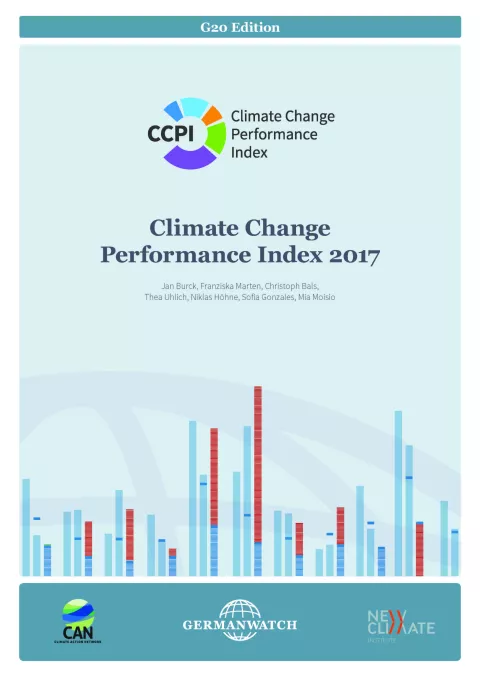
Recognizing the urgency to take immediate action in protecting the global climate, the 21st Conference of the Parties, held in December 2015 in Paris, made a groundbreaking achievement in adopting the goal to limit global warming to “well below” 2°C and to pursue efforts to limit warming to a 1.5°C. Under the Paris Agreement, climate action was anchored in the context of international law. This requires countries to make their own unique contribution to the prevention of dangerous climate change. The next crucial step to follow this agreement is the rapid implementation by the signing parties of concrete measures to make their individual contributions to the global goal. For the past 12 years, the Climate Change Performance Index (CCPI) has been keeping track of countries’ efforts in combating climate change. The varying initial positions, interests and strategies of the numerous countries make it difficult to distinguish their strengths and weaknesses and the CCPI has been an important tool in contributing to a clearer understanding of national and international climate policy.
In this special edition of the CCPI, the efforts and performances of the G20 countries are evaluated. The G20 are together responsible for 75% of the global Greenhouse Gas Emissions (GHG) and are therefore the key for starting a global transformation.
In 2017 the methodology of the CCPI was revised, due to recent global climate policy developments in the last years. One of the mayor events that marked a milestone in the international climate negotiations was the development and ratification of the Paris Agreement. For the first time, it is possible to measure states based on the promises they themselves formulated in their Nationally Determined Contributions (NDCs).
The CCPI aims to capture those promises and evaluates the countries‘ 2030 targets within the important categories greenhouse gas emissions, renewable energy and energy use to determine, if they are on track to a well below 2°C pathway. The CCPI now also reflects countries‘ current performances towards this pathway in absolute terms, in addition to the remaining relative indicators. For the pathways, we set three ambitious targets that are essential to stay well below 2°C, which has to be reached until 2050: nearly zero GHG emissions (taking into account country-specific pathways, which gives developing countries bit more time to reach this goal), 100% energy from renewable sources, and remaining at today’s global energy use per capita levels. The CCPI compares where countries actually are and where they need to be, to meet the ambitious benchmarks. Following a similar logic, the CCPI evaluates the countries‘ own 2030 targets in comparing them to the same benchmarks.
Still, more than half of the CCPI ranking indicators are qualified in relative terms (better–worse) rather than absolute. Therefore, even those countries with high rankings have no reason to sit back and relax. On the contrary, the results illustrate that even if all countries were as involved as the current front runners, efforts would not yet be sufficient to prevent dangerous climate change.
Overall Results







